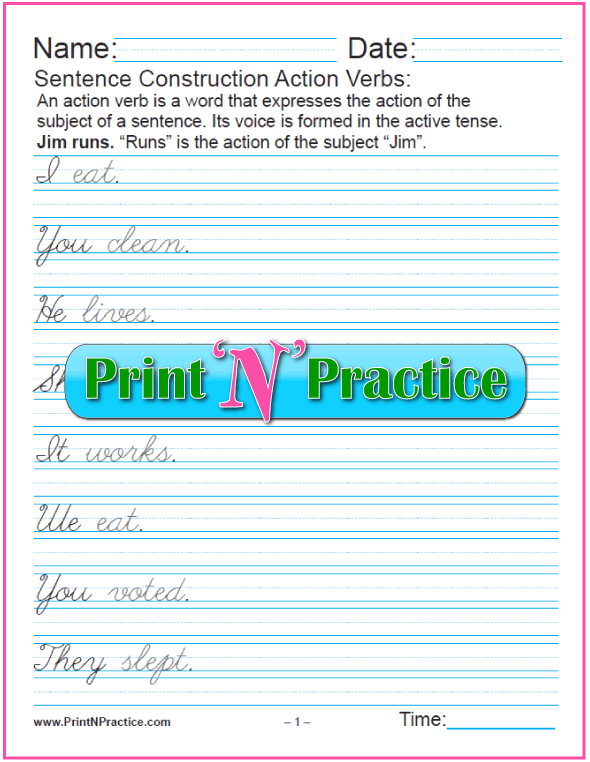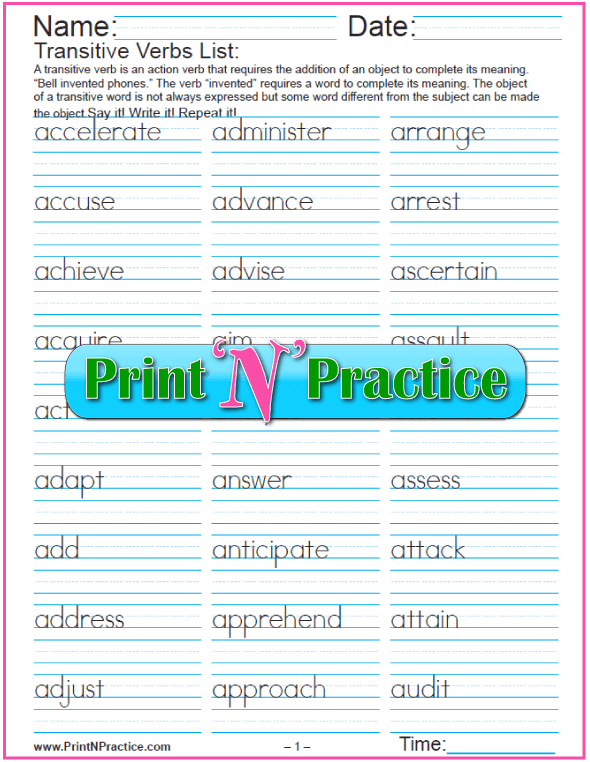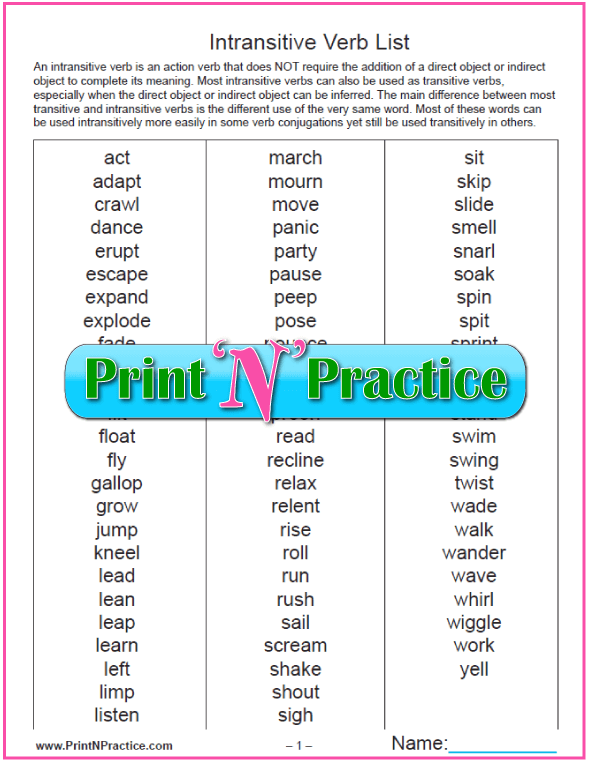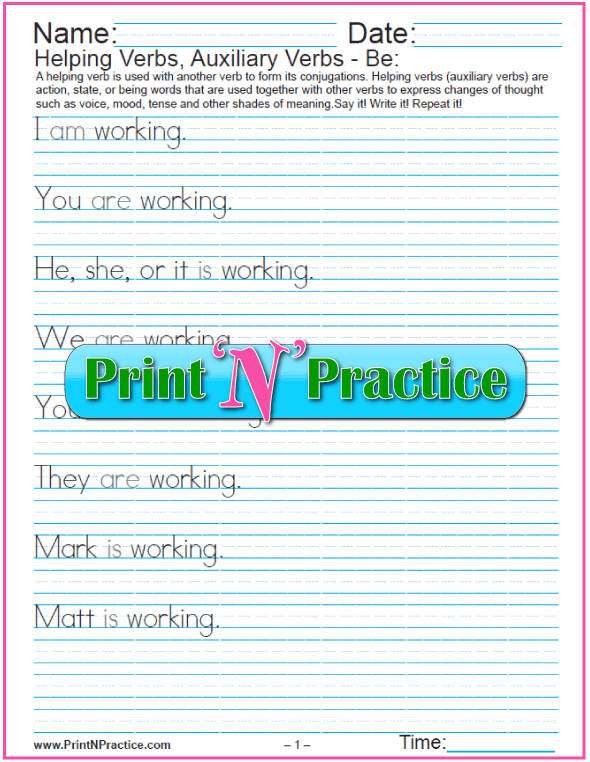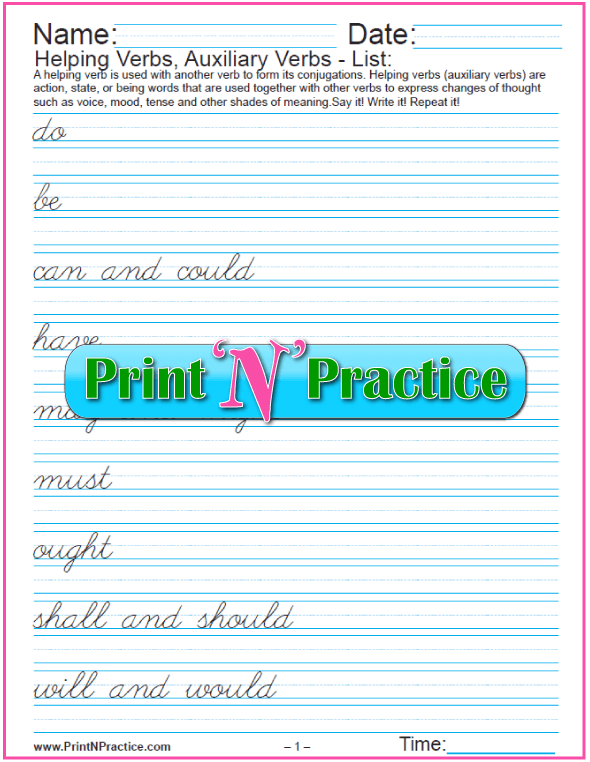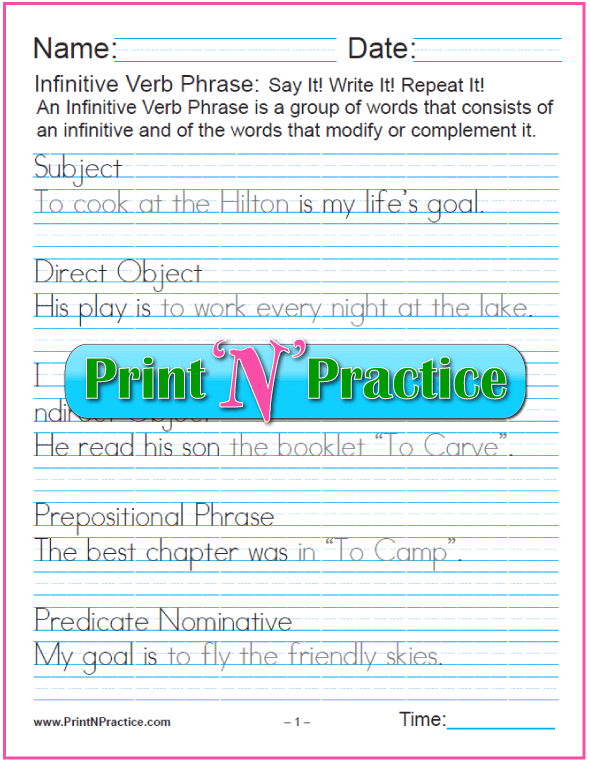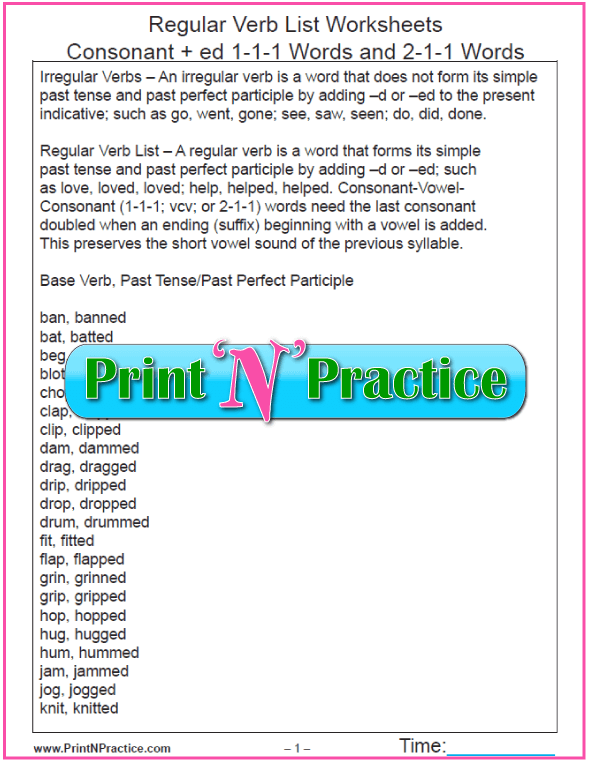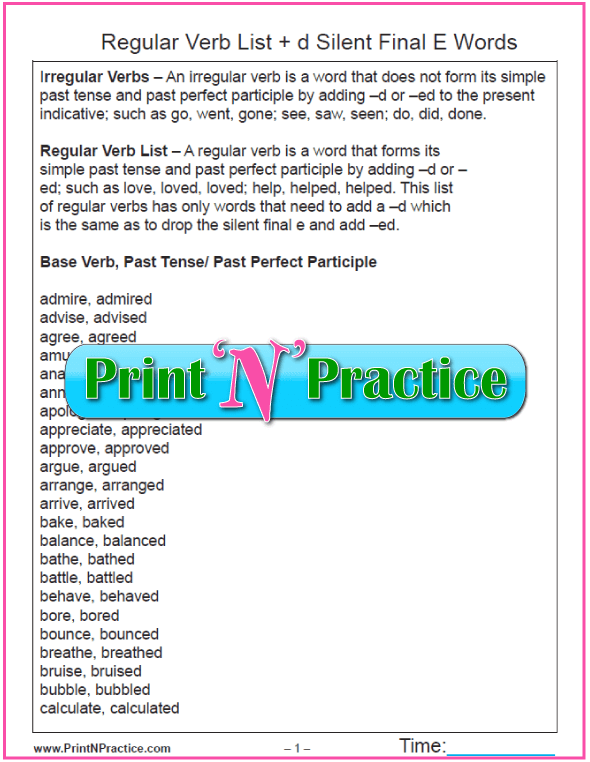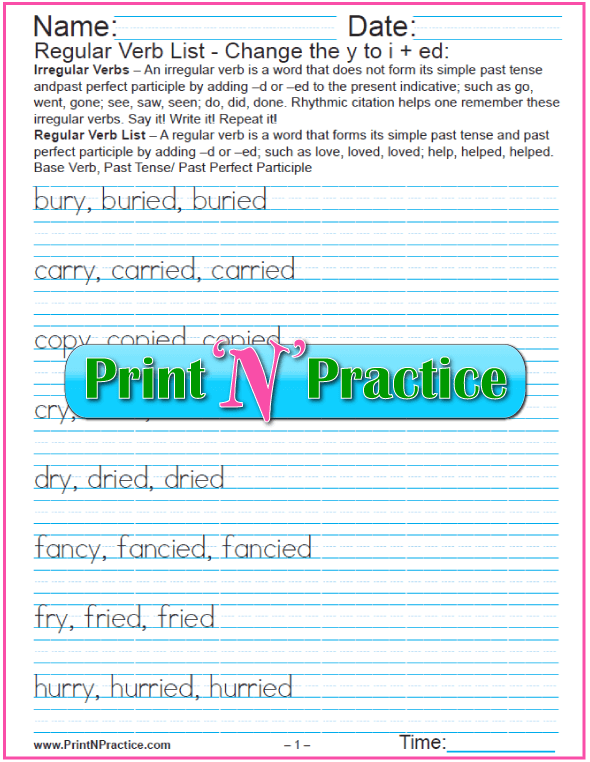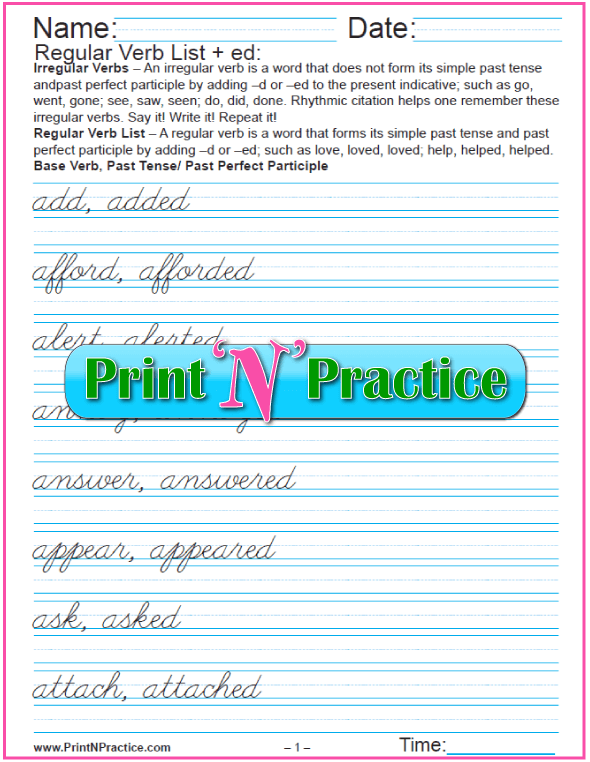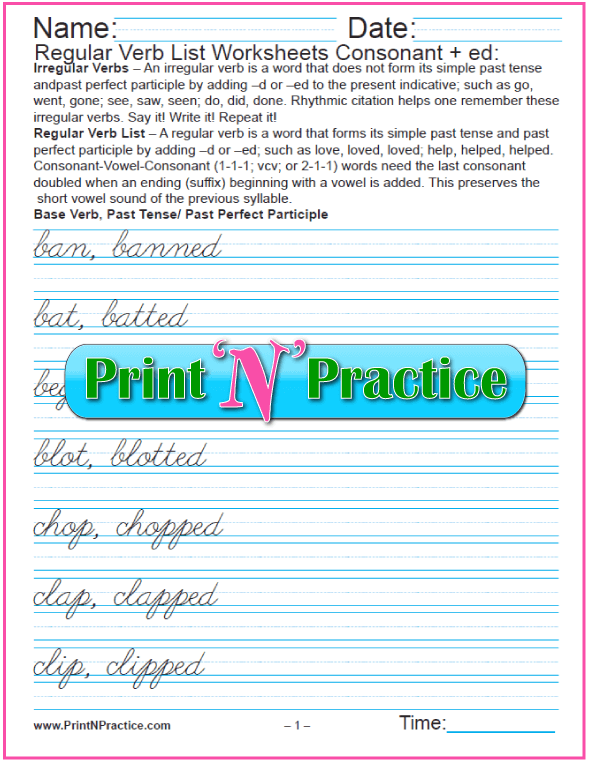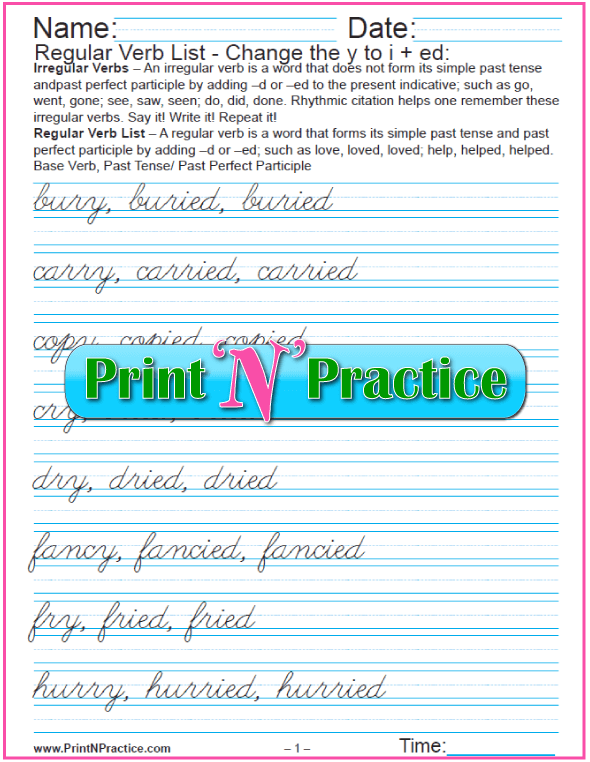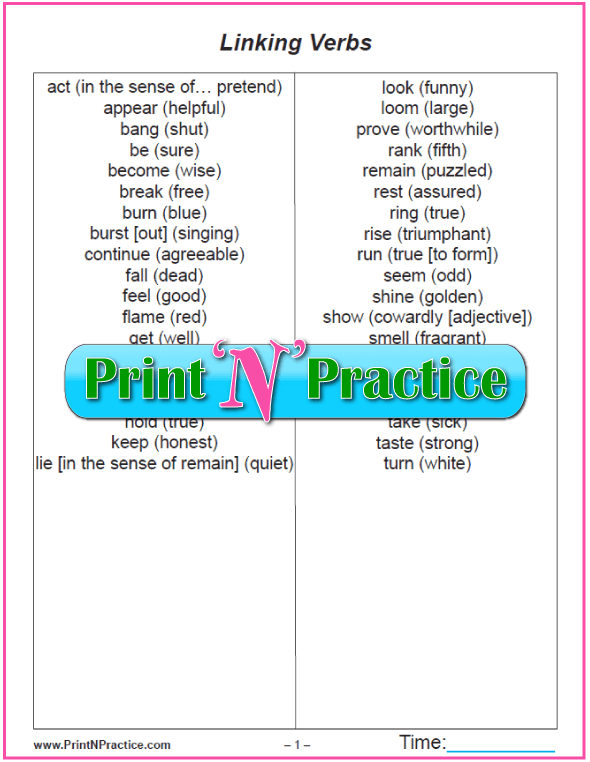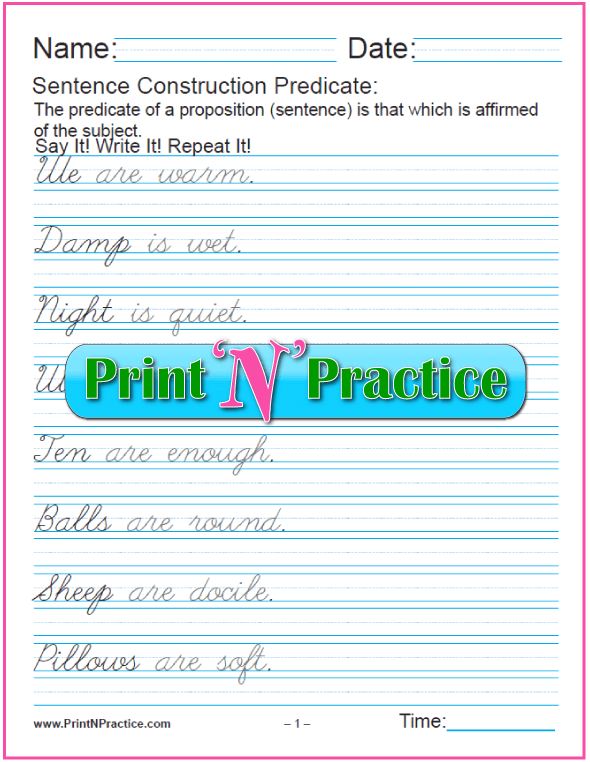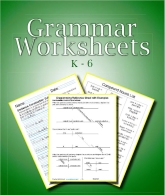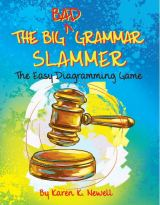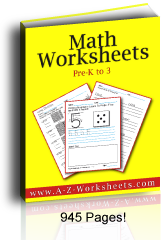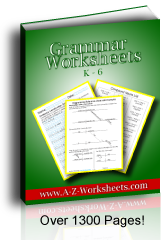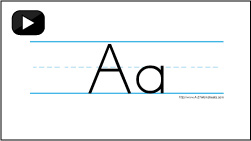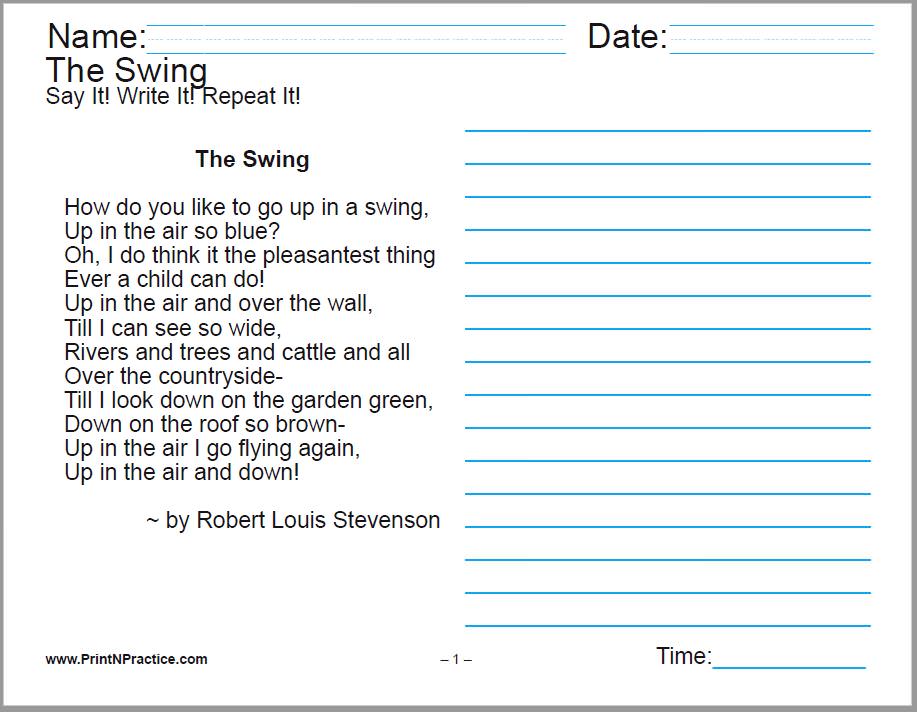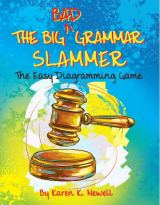So Many Types Of Verbs!
Regular & Irregular Verbs And More...
I've collected most of the types of verbs on this page. There are several explanatory charts at the bottom of this page and scores of practice verb worksheets below.
You'll find oodles of verb worksheets on this page.
What Is A Verb?
The first question?
What is a verb? A verb is a word that expresses action, state, or being in a sentence. Verbs are either action verbs (transitive verbs or intransitive verbs) or linking verbs.
Be encouraged to stay in touch! Join my free newsletter....
Join To Receive My Free PrintNPractice Newsletters!
Free Online Worksheets For School, Homework, And Homeschool Practice
Free Online Teacher Resources - Free Homeschool Curriculum
For teachers and parents: PrintNPractice free printable worksheets are all copyright-free, digital activities for students. Use them in homeschool, interactive notebooks for online classrooms, Google classroom, distance learning, tutoring and learning pods, and hybrid school.
- No prep.
- No tracking.
- Self learning.
- Copyright free.
- Lifetime license.
- Diverse learners.
- Easy drill-and-kill.
- Interactive worksheets.
- Printable morning work.
- Paperless morning work.
- Go printable or paperless.
- Stay on track. Summer review.
- Easy elementary school curriculum.
- Remote learning packets or homework.
- Most need no answer key or key is included.
- Videos for audio and visual learners. God bless headphones!
See free teacher and homeschool digital interactive school-at-home learning exercises with no login, no sign-up, no voucher, no account, and no credit card. Loads of digital activities for device-based learning. As seen at TeachersPayTeachers.
Teaching verbs is so much easier once the children know that it's simply a name for the action or being in the sentence.
I remember when my sister told me to just fill in the blank: "Can I _____?"
That was a light bulb moment for me!
Some of this same verb definition information can be rearranged as in the Verb Charts at the bottom of this page (section number 10).
You can click through the links below for more info on each of the different types of verbs.
There are some very helpful verb charts in section 10 at the bottom of this page.
Types of Verbs And Verb Worksheets
1. Types Of Verbs: Action Verb Worksheets
Action verbs are easy to recognize once you realize what they are. Teach your students to ask the question, "Can I...?"
Action Verbs – An action verb is a word that expresses the action of the subject of a sentence. Its voice is formed in the active voice. Jim runs. “Runs” is the action of the subject “Jim”.
Direct Object - A direct object is the noun or pronoun that receives the action of a transitive verb in the ACTIVE voice and is formed in the objective case. It is one objective complement. A bug hit Ann. “Ann” is the direct object of the verb “hit”.
Indirect Object - An indirect object is the noun or pronoun that receives the direct object and is formed in the objective case. It is another objective complement. Ann gave him a cookie. The word “him” receives the direct object “cookie”.
The first downloads have an action verb list 19 pages long in alphabetical order. See passive verbs worksheets in section number nine on this page.
2. Types Of Verbs: Transitive And Intransitive Verbs
What is a transitive verb? – A transitive verb is an action verb that requires the addition of an object to complete its meaning. “Bell invented phones.” The verb “invented” requires a word to complete its meaning.
An action verb list can serve for both transitive and intransitives. The main difference between most transitive and intransitive verbs is their use so that a list of action verbs can serve both. The object of a transitive word is not always expressed, but some word different from the subject can be made the object.
Only transitive verbs can be used in the passive voice.
See all our PrintNPractice printables in affordable bundles here .
3. Types Of Verbs: Intransitive Verbs
Intransitive Verbs Definition – An intransitive verb is an action verb that does NOT require the addition of an object to complete its meaning. “People think.” The verb “think” does NOT require another word, or an object, to complete its meaning.
There is not an intransitive verb list since most action verbs can be used as both transitive and intransitive verbs; therefore an action verb list is helpful. Most intransitive verbs can be used as transitive verbs, especially when the direct object or indirect object can be inferred.
The main difference between most transitive and intransitive verbs is their use.
Manuscript
Intransitive Verb List
4. Types Of Verbs: Helping Verb Worksheets
Helping verbs – Auxiliary Verbs – (auxiliary means helping). A helping verb is a word that is used with other verbs to express changes of thought such as voice, mood, tense and other shades of meaning in Verb Conjugations. Helping verbs form one predicate verb, or verb phrase, when taken together with the verbs they help. It is helpful to memorize them or review them several times when learning to conjugate verbs.
There are 22 helping verbs in English: be, been, am, are, is, was, were; do, does, did; have, has, had; can, could; may, might; must, ought; shall, should; will, would.
Choose a helping verbs worksheet below. Most have two worksheets. See Linking Verbs at number 8 below.
List Of Helping Verbs:
|
Modal Auxiliary Verbs
|
Helping Verb List And Worksheets
Manuscript Helping Verbs
Cursive Helping Verbs Worksheets
Types Of Verbs: Modal Auxiliary Verbs
Modal auxiliary verb definition - A modal auxiliary verb is a verb that indicates ability, direction, expectation, permission, probability, or obligation. See auxiliary verb examples below.
- There's quite a difference between could and can. Can usually shows ability and could shows a possibility or probability.
- Use may and might to show permission, especially in the case of the word may, or possibility as with might.
- Is must a modal verb? Yes. Must does not necessarily designate a moral imperative where ought does.
- What is the difference between shall and should? Shall and should sometimes denote a moral aspect. Otherwise shall is also an old form for the first person will. I personally do not know anyone here in the mid-west who says I shall, you will, he will, we shall, you all will, they will. Should can also denote a conditional aspect or a moral aspect.
- Will vs would. Will, as an auxiliary verb, sets the main verb in the future tense. Would denotes a possibility or a condition.
The difference between will and would as modal auxiliary verbs is that when a person will do a thing there is an amount of certitude as well as futurity. There is less certitude when one says that he would do a thing.
As a main verb "will" is related to choice or volition. "I will it." as in "I choose it." There the verb will would be an action verb.
5. Types Of Verbs: Infinitive Verb Worksheets
Infinitive Verb Reference Sheet
Quick notes:
The full infinitive includes the word to in English. We say that the full infinitive is "to be". Some call the base without the word to a bare infinitive. The old term for this is an infinitive phrase.
ESL students would want to know that their endings cover the infinitive where we add the word to. As in other languages like Spanish and French we form many of the types of verbs in English by adding the word to before the base verb.
Infinitive Verb Worksheets
Manuscript Infinitive Verb Worksheets
Cursive Infinitive Verbs Worksheets
What is a split infinitive? A split infinitive simply has some other word between the word to and the base verb, usually an adverb as in this example:
"To boldly go" where boldly splits between the words to and go. An infinitive phrase can also be used as other parts of speech. You can see more about gerunds and infinitives here.
Types Of Verbs: Regular And Irregular Verbs
6. Regular Verb Worksheets - Simply Add -ed
Regular verbs actually include more than just being able to add -ed for the past tense, yet that is most of it. There are several types of verbs that use a form of the past tense ending -ed.
Several of these have over forty worksheets for practice.
These worksheets cover adding -ed, changing y to i and adding -ed, and adding d to a silent final e, or dropping the e and adding -ed - same result. These are basically -ed words.
Regular Verbs List To Print
Manuscript Regular Verbs List
Cursive Writing Verbs List
The rule for changing y to i for the regular past tense ending is similar to the rule for plural nouns. You can find many types of noun worksheets here.
7. Types Of Verbs: Irregular Verb Worksheets
8. Linking Verb Worksheets
Linking Verbs – A linking verb, or copulative verb, joins or links, a predicate to a subject and is used to make an assertion about the subject, positive or negative. All linking verbs carry some sense of the verb “be” and many are based on the five senses as with these verbs: appears, smells, feels, tastes, and sounds.
Sentence structure runs like this: Subject-Linking Verb-Predicate. Here are two linking verb examples:
- Fire is hot. “Fire” is the subject, “is” is the linking verb, and “hot” is the predicate.
- Mice are cute. The linking verb joins the subject “mice” to the predicate adjective “cute” affirming that mice are cute.
It can be very helpful to have a list of linking verbs.
Printable List of Linking Verbs
Print Linking Verbs Worksheets
Cursive Linking Verbs Worksheets
Predicate Verbs
When you're teaching the predicate remember that it includes the verb and what is predicated of the subject. Go to our diagramming worksheets to see that the predicate can simply be the verb.
Predicate Verbs Worksheets
Cursive Predicate Verbs Worksheets
You can find more about predicates here.
9. Passive Verb Worksheets
The difference between active and passive verbs is whether the subject is doing the action. If the subject does the action the verb is active, if not it is in the passive tense.
These worksheets have sentences that use the passive voice.
Manuscript
Cursive
10. Types Of Verbs Charts
Action Verbs And Linking Verbs Chart
At A Glance Types Of Verbs
|
Transitive Verbs take the objective compliments direct and indirect objects which answer the questions, "What?" or "Whom?" Only transitive verbs can be used in the Passive Voice | ||
|
Action Verbs< | ||
|
Verbs |
Intransitive Verbs are actions verbs that do not take objects. There's no answer to "What?" or "Whom?" The main difference is the use of the verb. | |
|
Linking Verbs- |
Linking Verbs join the subject to a word that names or describes it; verb to be. A linking verb can be likened to an equal sign and can indicate a definition. Be, become and seem are always linking verbs. |
Verb Chart – At A Glance
Third Person Singular Verbs – add –s or –es.
Regular Verbs – A regular verb is formed by adding –ed, or –d to form the past tense and past participle.
Irregular Verbs – An irregular verb is not formed by adding –ed to the base to form the past tense.
Helping Verbs - be, can and could, do, have, may and might, must, shall and should, will and would.
Principal Parts of a Verb – There are four principal parts of a verb.
- Infinitive – add the preposition "to" and base verb form.
- Present participle – am, are, or is + base verb + –ing.
- Past – base verb with the ending –ed, or –d.
- Past Participle – have or has + base verb + –ed.
Simple Tenses of Verbs – Past, Present, and Future.
Perfect Tenses – Past, Present, and Future.
Imperfect Tense (Past Continuous Tense, Past Progressive Tense) – was or were + base verb + -ing.
Progressive Tenses – be + All six verb tenses + -ing.
Emphatic Tenses – do, does, or did + present tense of the verb.
Verbals and Verbal Nouns – Gerunds, Infinitives, Participles
See also our worksheets for other types of verbs:
- Gerunds, Infinitives, Participles
- Simple Sentences
- Teaching Verbs With A Timeline
- Verb Tenses Worksheets
* American English Grammar And Writing Worksheets
<< This download has my favorite grammar PDFs for practice in elementary and middle school grammar lessons.
If you like the samples on this page, you'll love the grammar download which includes diagramming charts and English Grammar Definitions ebook.
These are great for easy practice and for ESL students.
Get the set. And enjoy!
* Karen Newell's Grammar And Writing Worksheets
Fast way to teach basic grammar!
Simple step by step workbook.
* Elizabeth O'Brien's English Grammar Revolution
Elizabeth O'Brian has the best diagramming workbooks I've seen. Her website also has videos to go with each lesson.
Buy PDF Kids Printable Worksheets Organized By Topic In Complete Digital Bundles Or Learn More Below.

Mary Fifer, BSBA is webmaster, author, and researcher at PrintNPractice.com. She has created elementary school practice exercises using printable or digital interactive worksheets. Perfect for today's teachers, tutors, homeschoolers, and students!
Thank you for visiting and for sharing. :-)
Be encouraged to stay in touch! Join my free newsletter....
Thank you for visiting our types of verbs worksheets page.




